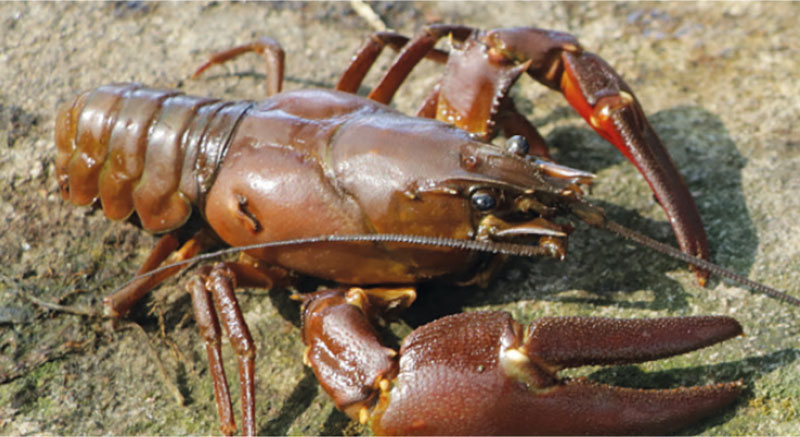A decrease in species diversity is a negative consequence of many human activities. The number of native animal and plant species is decreasing, their populations are shrinking or completely disappearing, the number of endangered species is increasing, and non-native species are spreading. Global problems are perhaps most evident in the example of freshwater ecosystems.
Invasions of non-native species, associated with high cultural-sociological and economic losses, are currently considered one of the most significant factors in the decline of species diversity. For these reasons, the issue of non-native species is receiving considerable attention worldwide.
There are currently six species of crayfish living in the wild in the Czech Republic, of which only two are native: noble crayfish (Astacus astacus) and stone crayfish (Austropotamobius torrentium). Narrow-clawed crayfish (Astacus leptodactylus) is a European species but not native to the Czech Republic. Other species – signal crayfish (Pacifastacus leniusculus), spiny-cheek crayfish (Orconectes limosus), and marbled crayfish (Procambarus fallax) come from North America and are invasive species [1, 3].
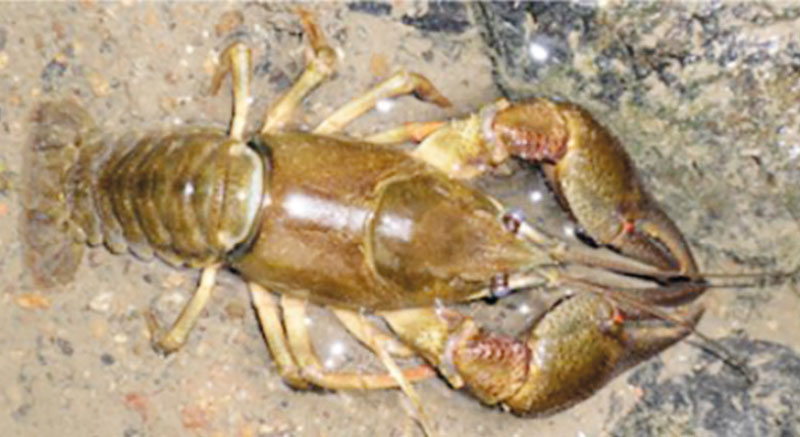
Noble crayfish
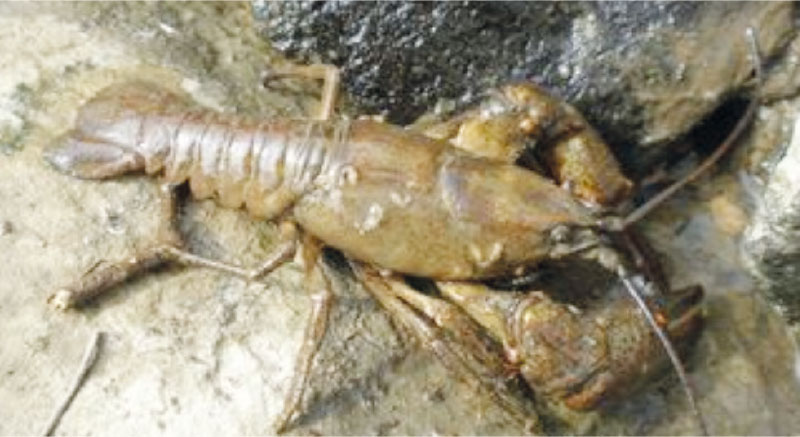
Stone crayfish
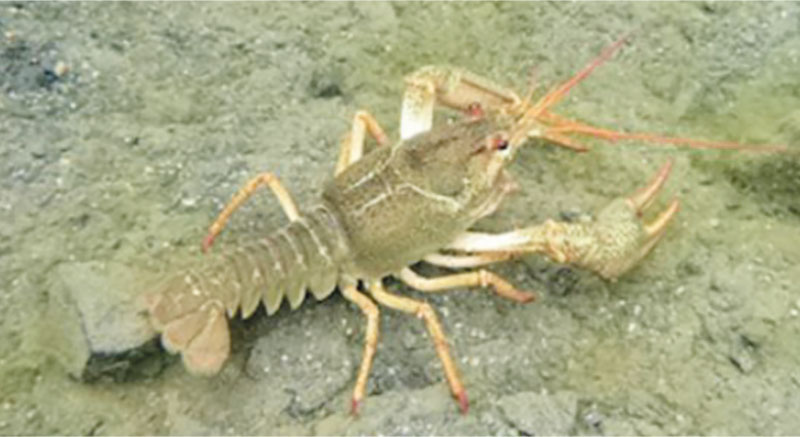
Narrow-clawed crayfish
Signal crayfish
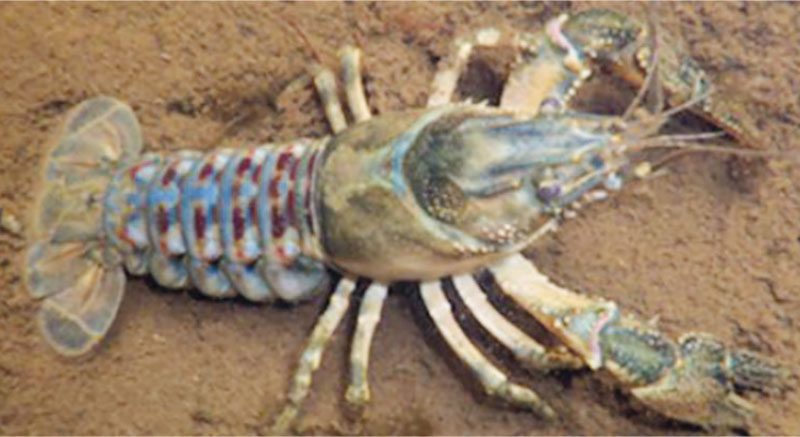
Spiny-cheek crayfish
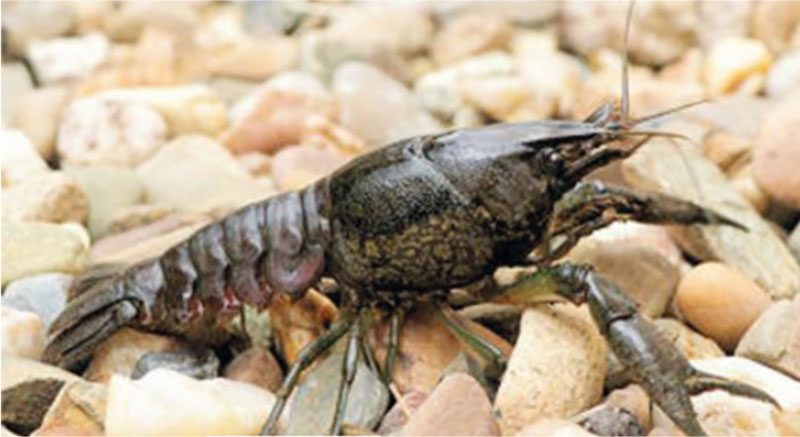
Marbled crayfish
Our crayfish have been around since forever, so to speak. Their current distribution dates back to the period after the last ice age, and man also played a significant role in it; noble and narrow-clawed crayfish are large enough to be used as food, so it was worthwhile for people to move them to new sites. The spread of invasive crayfish is probably due to shipping, with which they were accidentally introduced to Europe in the 19th century. In the second half of the 20th century, American crayfish had already been deliberately released in Europe – as a replacement for native crayfish decimated by crayfish plague, but mainly as a popular culinary delicacy. A problem that continues to this day are aquarists, who brought a number of other crayfish species from all over the world into Europe.
While stone crayfish is mainly found in small and medium-sized streams, the more abundant noble crayfish is also found in large watercourses, in ponds and reservoirs. Narrow-clawed crayfish also prefers different types of stagnant water where it was released in the past. Invasive crayfish are very adaptable and, at the same time, have much lower requirements for water purity, so they basically spread to all the places where native crayfish are or can be found. We can find them in small streams and ponds (signal crayfish), in large watercourses (spiny-cheek crayfish), as well as in reservoirs and ponds (marbled and spiny-cheek crayfish). Their occurrence is shown on the map.
Unlike invasive crayfish, which carry crayfish plague while being resistant to it themselves, native crayfish are killed by the disease. Fortunately, crayfish plague does not usually kill all crayfish in affected streams, but each time a large part of the population disappears. The causative agent of the disease is the fungus-like microscopic pathogen Aphanomyces astaci, which lives in the crayfish carapace.
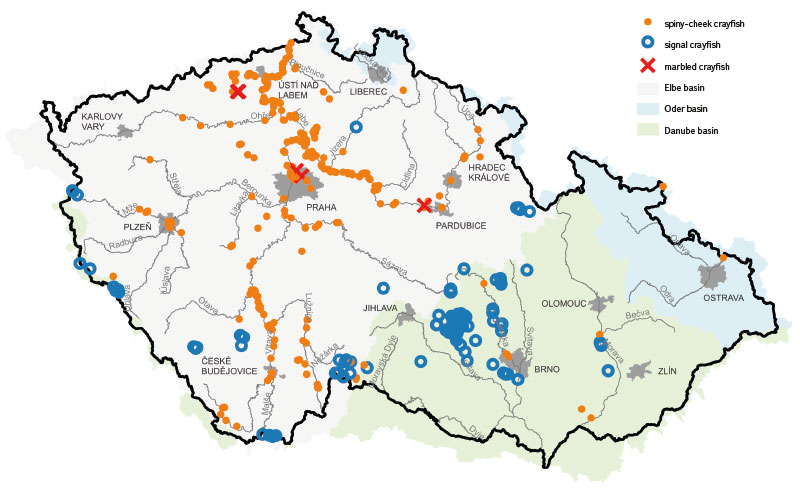
Map of invasive crayfish species occurrence in the Czech Republic. Jiří Picek, Jitka Svobodová and Silvie Semerádová, TGM WRI, p. r. i., May 2023.
Documentation: Locations of sightings and occurrence of crayfish: NCA CR, TGM WRI, p. r. i., data provided by university students and users of “Crayfish in the Czech Republic” mobile and internet application.
Another advantage that invasive crayfish have is in their reproduction. While our native crayfish usually have tens to hundreds of eggs (stone crayfish up to 100 eggs, noble and narrow-clawed crayfish up to 250 eggs), invasive crayfish can have over 800 eggs at a time. Some can breed twice a season. In addition, marbled crayfish is able to reproduce parthenogenetically, i.e., a single female can lay eggs, produce young, and establish a large population even without the presence of a male (without the need for fertilization). Similarly to other invasive species, non-native crayfish are able to disrupt the balance of the freshwater ecosystem and, simultaneously, eliminate other (especially native) species of basically all animals and plants.
How can we control invasive crayfish?
The basic and cheapest method of preventing the spread of invasive crayfish is to inform the public about the harmful effects of invasive species in order to limit the transmission of invasive crayfish to new locations as much as possible. If invasive crayfish appear somewhere, their complete eradication is no longer possible. The only way to control them is to regularly and repeatedly reduce their number. The most widely used method of controlling invasive crayfish species is manual collection and trapping in bait traps. However, this method carries one significant risk. It may happen that we select large individuals from the population, thereby reducing the pressure on younger developmental stages, which subsequently leads to a greater success rate for their survival. Then, paradoxically, the effort to reduce the population will have the opposite effect. The method of trapping crayfish must therefore be combined with other procedures, such as release of their predators. The best predators are fish that like to feast on invasive crayfish, such as eel, burbot, pike perch, catfish, chub, as well as dragonfly larvae, which successfully destroy juvenile crayfish. Another method of controlling invasive crayfish is the sterilization of the males, who after subsequent release compete for females with other males, which can significantly reduce the number of successfully fertilized females while maintaining predation pressure on younger developmental stages. It is also possible to drain a reservoir, collect the crayfish and then let the site freeze for the winter or dry it in the summer. In combination with the application of, for example, chlorine lime, this method is quite effective. After re-filling the reservoir, it is advisable to release the crayfish predators again. Using poison at a site is considered an extreme method. It can only be used to a limited extent in locations with no run-off and little biological significance, as the poison will kill all other living organisms. Another possibility is to simply separate an invasive crayfish population from its surroundings by creating sufficiently high barriers that crayfish are not able to cross [2].
A crayfish is a crayfish, someone might say. Why does it matter if foreign crayfish replace ours? At first glance, it seems like nothing. However, it is actually a serious problem. The native crayfish species have been living in harmony with the other inhabitants of our watercourses for a long time; other components of aquatic ecosystems suffer from the presence of invasive crayfish because these crayfish destroy both aquatic macrozoobenthos and our native fish species (especially eggs and fingerling). They can also destroy aquatic plants, including critically endangered species, and they attack other animal species, for example, the critically endangered freshwater pearl mussel or the thick shelled river mussel.
The text was adapted from the leaflet Vlach, P. Naši vs. invazní raci v Česku (2023) that serves to inform the public about crayfish species and their effect on the aquatic ecosystem.
Acknowledgements
This project was supported by a grant from the Norwegian Funds. Its results are available at https://crayfish2022.vuv.cz
Use our Crayfish in the Czech Republic application to record and send your crayfish sightings. By doing so, you will help us protect our native crayfish species.
This informative article has not been peer-reviewed.

